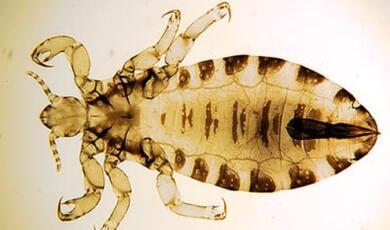Do Microbes Have Immune Systems?
Share
- Details
- Text
- Audio
- Downloads
- Extra Reading
We often think of immunity as being a human, or at least mammalian, phenomenon. But in fact almost all living organisms have some form of immune system. In this lecture, we lift the lid on the astonishingly diverse immune mechanisms used by bacteria, amoebae, nematodes and many other microbial forms of life in their constant battle against viruses and each other.
Download Text
Do Microbes Have Immune Systems?
Professor Robin May
2 October 2024
For this year’s lecture series, I am trying a different format of transcript. Rather than a long-form written document, which has been largely rendered obsolete by the ability to transcribe from the YouTube recording, this handout is a brief summary of the key topics in the lecture, together with some more extensive suggestions for extra reading. As ever, we would be delighted to hear your thoughts on this new approach!
We are all used to the concept of immunity. During the Covid-19 pandemic, the global media conversation was dominated by immunity – are some people more immune than others, what can we do to boost our immunity and, critically, will we ever have a vaccine to boost our immune systems against this new virus? As a result, immunity is now a common topic of conversation at dinner tables and social gatherings around the world. Almost all of these conversations focus on human immunity; perhaps with the occasional segue into consideration of immunity and vaccination for our domestic pets and livestock. And yet immunity is not restricted to mammals or even to multicellular organisms. In this lecture we delve into the fascinating world of microbial immunity. How do bacteria fight off viruses? Why is your bread dough a seething warzone between microbes? And how might we be able to harness microbial immunity for human benefit?
Key topics in the lecture with further reading
- Restriction enzymes as a bacterial defence against viruses:
Diverse Functions of Restriction-Modification Systems in Addition to Cellular Defense | Microbiology and Molecular Biology Reviews (asm.org) - The CRISPR system – immunological ‘memory’ for bacteria
CRISPR Immunity Explained: How Cas9 Protects Bacteria from Viruses (youtube.com)
The CRISPR-Cas immune system: Biology, mechanisms and applications - ScienceDirect - Harnessing bacterial immune mechanisms for human biotechnology
Jennifer Doudna: How CRISPR lets us edit our DNA | TED Talk - Social amoebae – from single cells to multicellular slugs
Dictyostelium: a cellular slime mold – Inanimate Life (geneseo.edu) - Immunity in social amoebae – sentinel cells
Immune-like Phagocyte Activity in the Social Amoeba | Science - Viruses of yeast and what they have taught us about fungal immune systems
Diverse yeast antiviral systems prevent lethal pathogenesis caused by the L-A mycovirus | PNAS - Giant viruses and their satellite virus foes
rapidly expanding universe of giant viruses: Mimivirus, Pandoravirus, Pithovirus and Mollivirus | FEMS Microbiology Reviews | Oxford Academic (oup.com) - Harnessing satellite viruses for immune defences in protists
Endogenous virophages are active and mitigate giant virus infection in the marine protist Cafeteria burkhardae | PNAS - Intracellular parasites of amoebae
A Systematic Review of Intracellular Microorganisms within Acanthamoeba to Understand Potential Impact for Infection (mdpi.com)
© Professor Robin May 2024
Key topic in the lecture with further reading
- Restriction enzymes as a bacterial defence against viruses:
Diverse Functions of Restriction-Modification Systems in Addition to Cellular Defense | Microbiology and Molecular Biology Reviews (asm.org) - The CRISPR system – immunological ‘memory’ for bacteria
CRISPR Immunity Explained: How Cas9 Protects Bacteria from Viruses (youtube.com)
The CRISPR-Cas immune system: Biology, mechanisms and applications - ScienceDirect - Harnessing bacterial immune mechanisms for human biotechnology
Jennifer Doudna: How CRISPR lets us edit our DNA | TED Talk - Social amoebae – from single cells to multicellular slugs
Dictyostelium: a cellular slime mold – Inanimate Life (geneseo.edu) - Immunity in social amoebae – sentinel cells
Immune-like Phagocyte Activity in the Social Amoeba | Science - Viruses of yeast and what they have taught us about fungal immune systems
Diverse yeast antiviral systems prevent lethal pathogenesis caused by the L-A mycovirus | PNAS - Giant viruses and their satellite virus foes
rapidly expanding universe of giant viruses: Mimivirus, Pandoravirus, Pithovirus and Mollivirus | FEMS Microbiology Reviews | Oxford Academic (oup.com) - Harnessing satellite viruses for immune defences in protists
Endogenous virophages are active and mitigate giant virus infection in the marine protist Cafeteria burkhardae | PNAS - Intracellular parasites of amoebae
A Systematic Review of Intracellular Microorganisms within Acanthamoeba to Understand Potential Impact for Infection (mdpi.com)
Part of:
This event was on Wed, 02 Oct 2024
Support Gresham
Gresham College has offered an outstanding education to the public free of charge for over 400 years. Today, Gresham College plays an important role in fostering a love of learning and a greater understanding of ourselves and the world around us. Your donation will help to widen our reach and to broaden our audience, allowing more people to benefit from a high-quality education from some of the brightest minds.


 Login
Login







